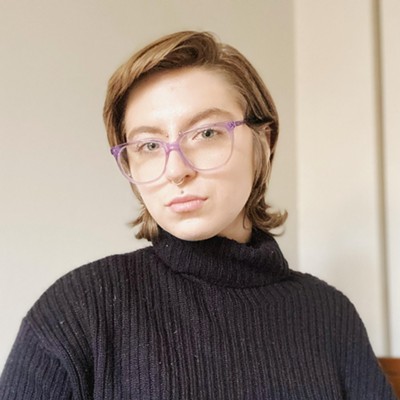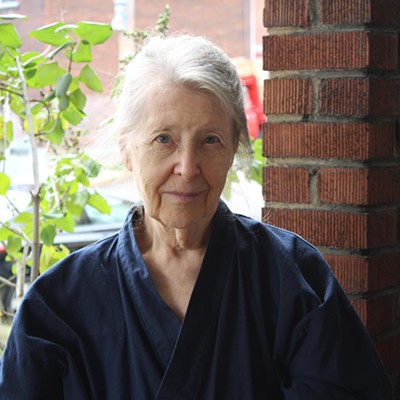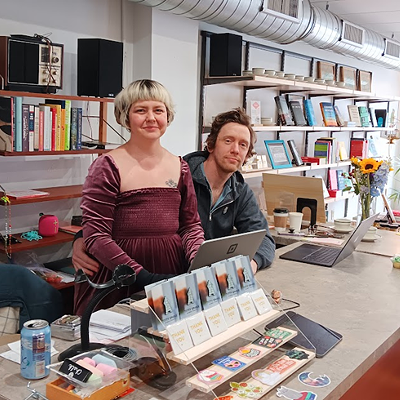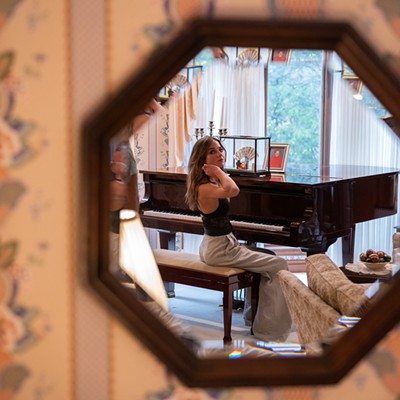Arlan Hess couldn't have planned it better. In March 2004, at its debut at the Associated Writing Programs conference in Chicago, the literary journal she helped found attracted not only eyes, but sales. In a few days, the first issue of Paper Street Press sold more than 100 copies. Not bad for a brand-new publication based in Mount Lebanon.
Then again, despite its local roots, Paper Street was never intended as a Pittsburgh-centric endeavor. Soliciting work nationally, publishing award-winning contributors along with lesser-known writers who might have trouble cracking more established outlets, Paper Street aspires to be a little journal that could.
Running a literary magazine has been a goal for Hess, a Mount Lebanon native, since at least her undergraduate days studying English at Kent State University. For 10 years after graduation she worked in finance, but returned to school for her master's in poetry at Vermont College. A fellow long-distance student was Dory Adams, a North Hills-based fiction writer with similar dreams -- dreams that post-9/11 soul-searching convinced Hess and Adams to pursue.
The two started taking submissions in May 2003, Hess serving as poetry editor while Adams culled the fiction. The bi-annual journal's title refers to the Pittsburgh phenomenon of a street that exists on maps, but in real life is a concrete staircase. Adams' husband, photographer Kevin Scanlon, provided the cover photos of various paper streets; so did Josephine Posti, who owns a public-relations firm and has been a friend of Hess's since Mount Lebanon High School.
The first issue was printed just in time for its premiere. "Personally, I feel like we knocked it out of the park in Chicago," says Hess, 38, relaxing on a couch in Paper Street's den-like second-floor headquarters in a small business district on Beverly Road.
At 163 pages, Vol. 1, No. 1 featured 23 poems, seven fiction pieces and Hess' interview with Ohio poet Maggie Anderson. One measure of success: When Paper Street sought material for its second issue, advertising only in Poets & Writers magazine and the AWP Chronicle, submissions doubled. Like most literary journals, Paper Street doesn't pay, offering contributors only one copy of the pertinent issue and one year's subscription. On the other hand, the journal benefits from its summer submission schedule -- rare in a world of lit mags run by grad students. Hess says the quality of submissions has also risen dramatically. "It's getting really competitive. I turn down what I know to be really good work."
Apparently her taste is catching. Paper Street's subscription list has grown to 205, with another 100 or so copies moving at conferences and at local outlets including Jay's Book Stall, the University of Pittsburgh Book Center and the North Hills Borders. On an $11,000 budget, the all-volunteer-and-intern operation is currently a couple hundred dollars north of breaking even, Hess says.
While there is a regional cast to Paper Street's contributors -- seven of 32 writers in the spring 2005 issue are from the Pittsburgh area -- "we are really much better known outside the city," Hess says. Subscription hotspots include the Minneapolis region, where there's a strong writing community, and the San Francisco area.
"Paper Street's a really great conglomeration of some of the best writers around and in the country," says Stephen Murabito, a published poet and fiction writer who co-directs the writing program at Pitt-Greensburg. "The poetry is as good as anything you're gonna read in a lot of other literary periodicals." Murabito likes Paper Street enough that he's using the spring 2005 issue -- whose fiction contributors include Carnegie Mellon English professor and award-winning writer Jim Ray Daniels -- on his fall syllabus. A story of Murabito's will be included in the fall issue, due in October.
Paper Street is even developing regulars: Stories by up-and-coming Massachusetts-based writer Sean Padraic McCarthy have appeared in two of the three issues. "He's gonna be huge," Hess predicts.
Hess, who herself teaches composition and creative writing at Washington & Jefferson College, acknowledges that the journal's core audience is writers who teach. She wants to get beyond that core, from which the journal also draws many contributors. Hence projects including a monthly writers' studio (the next one is Sat., Aug. 6) and a bi-weekly summer reading series at Mount Lebanon's Coffee Den (the next is Aug. 4).
"We want to develop personal relationships with the writers," says Hess. "I write, I think, very gushy rejection letters. We've gotten thank-yous for our rejection letters, because they're very gentle and encouraging."
Hess plans to further encourage top contributors by publishing collections of their work separate from the journal. "A big publishing house can't do that," she says, "but a little publishing house can."













